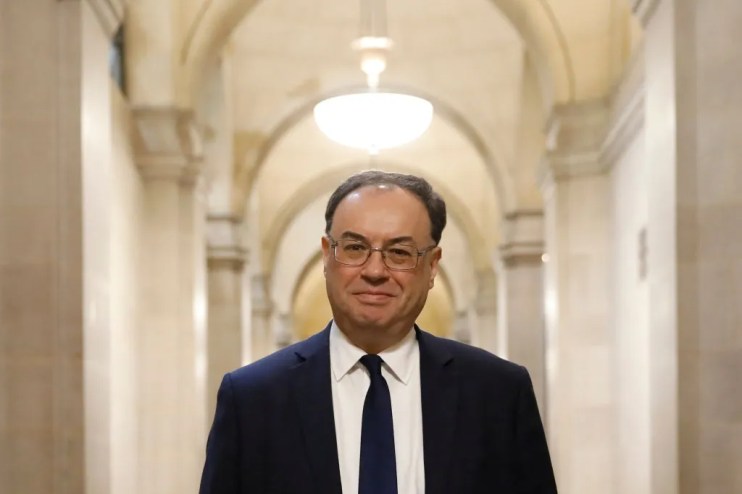Why the UK should not get carried away by the largest fall in inflation since 1992

This morning’s larger than expected fall in inflation is not as important as you might expect, although it does confirm that the battle against price rises has entered a new phase.
The headline rate of inflation fell at its fastest pace since 1992 in October, mainly because a rapid increase in energy prices this time last year has fallen out of the annual comparison.
In other words the significant drop in inflation – from 6.7 per cent to 4.6 per cent – was more of a mechanical effect, largely predicted by economists and the Bank of England, headed by Andrew Bailey.
So how important are this morning’s figures?
The Bank’s current thinking on the direction of inflation and interest rates was set out in its November Monetary Policy Report.
A brief recap: Although inflation would fall fairly quickly between now and the end of the year, it would likely remain above target until the end of 2025 due to a tight labour market.
It suggested that while interest rates are unlikely to have to go any higher, persistent inflation would force the Bank to leave rates in restrictive territory for most, if not all, of 2024.
Put another way, central banks are no longer playing catch-up with a rapid increase in inflation driven by international energy markets. Instead they are slowly grinding down the spillover effects from the original price shock.
October’s figures do not dramatically change this fundamental narrative, although they may refine it. Especially as it gives a big check to Rishi Sunak, who has hit a major goal of halving inflation by the end of the year, in double-quick time.
Between September and October this year, prices did not rise at all. This compared to a 0.5 per cent increase last month.
“We knew big base effects were going to drag down the annual comparison, but now starting to see monthly prints (cautiously) consistent with two per cent inflation,” Simon French, head of research at Panmure Gordon, noted on Twitter.
The large drop in headline inflation was also accompanied by meaningful progress on underlying measures of inflation, such as core inflation and services inflation. Both fell faster than the November report had forecast.
So, what will happen next?
Some analysts argued that this would allow the Bank to start cutting rates in the first half of next year.
“The latest inflation numbers should continue to assuage earlier concerns about the stubbornness of UK inflation,” Martin Beck, chief economic advisor to the EY Item Club said, predicting rate cuts would begin in spring.
Samuel Tombs, chief UK economist at Pantheon Macroeconomics, said “October’s consumer prices report should entrench expectations that the MPC will be able to start to reduce Bank Rate in about six months’ time”.
The Bank will want to see much more progress over the coming months to contemplate cutting rates however. Despite falling faster than expected, core inflation remains at 5.7 per cent while services inflation stands at 6.6 per cent.
Wage growth also remains too strong.
Excluding bonuses, annual wage growth fell to 7.7 per cent, down marginally from 7.8 per cent. Although this was in line with expectations the ONS noted it was still among the highest growth rate since records began in 2001.
“Unless wage growth softens sharply from here, and/or companies accept a major squeeze on their profit margins, inflation is not going to get back to the Bank of England’s two per cent target,” Chris Hare, senior economist at HSBC said.
And so it all comes back to the labour market, which remains tight despite the Bank’s rate hikes.
This suggests further progress will be slow. “The restrictions on labour supply and the stickiness of inflation expectations will mean that inflation fades slowly rather than suddenly,” Paul Dales, chief UK economist at Capital Economics said.
Today’s figures are a step in the right direction, but there’s still a long way to go.